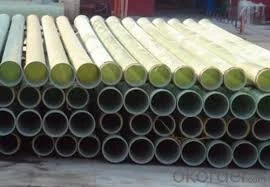
-
 Afrikaans
Afrikaans -
 Albanian
Albanian -
 Amharic
Amharic -
 Arabic
Arabic -
 Armenian
Armenian -
 Azerbaijani
Azerbaijani -
 Basque
Basque -
 Belarusian
Belarusian -
 Bengali
Bengali -
 Bosnian
Bosnian -
 Bulgarian
Bulgarian -
 Catalan
Catalan -
 Cebuano
Cebuano -
 China
China -
 China (Taiwan)
China (Taiwan) -
 Corsican
Corsican -
 Croatian
Croatian -
 Czech
Czech -
 Danish
Danish -
 Dutch
Dutch -
 English
English -
 Esperanto
Esperanto -
 Estonian
Estonian -
 Finnish
Finnish -
 French
French -
 Frisian
Frisian -
 Galician
Galician -
 Georgian
Georgian -
 German
German -
 Greek
Greek -
 Gujarati
Gujarati -
 Haitian Creole
Haitian Creole -
 hausa
hausa -
 hawaiian
hawaiian -
 Hebrew
Hebrew -
 Hindi
Hindi -
 Miao
Miao -
 Hungarian
Hungarian -
 Icelandic
Icelandic -
 igbo
igbo -
 Indonesian
Indonesian -
 irish
irish -
 Italian
Italian -
 Japanese
Japanese -
 Javanese
Javanese -
 Kannada
Kannada -
 kazakh
kazakh -
 Khmer
Khmer -
 Rwandese
Rwandese -
 Korean
Korean -
 Kurdish
Kurdish -
 Kyrgyz
Kyrgyz -
 Lao
Lao -
 Latin
Latin -
 Latvian
Latvian -
 Lithuanian
Lithuanian -
 Luxembourgish
Luxembourgish -
 Macedonian
Macedonian -
 Malgashi
Malgashi -
 Malay
Malay -
 Malayalam
Malayalam -
 Maltese
Maltese -
 Maori
Maori -
 Marathi
Marathi -
 Mongolian
Mongolian -
 Myanmar
Myanmar -
 Nepali
Nepali -
 Norwegian
Norwegian -
 Norwegian
Norwegian -
 Occitan
Occitan -
 Pashto
Pashto -
 Persian
Persian -
 Polish
Polish -
 Portuguese
Portuguese -
 Punjabi
Punjabi -
 Romanian
Romanian -
 Russian
Russian -
 Samoan
Samoan -
 Scottish Gaelic
Scottish Gaelic -
 Serbian
Serbian -
 Sesotho
Sesotho -
 Shona
Shona -
 Sindhi
Sindhi -
 Sinhala
Sinhala -
 Slovak
Slovak -
 Slovenian
Slovenian -
 Somali
Somali -
 Spanish
Spanish -
 Sundanese
Sundanese -
 Swahili
Swahili -
 Swedish
Swedish -
 Tagalog
Tagalog -
 Tajik
Tajik -
 Tamil
Tamil -
 Tatar
Tatar -
 Telugu
Telugu -
 Thai
Thai -
 Turkish
Turkish -
 Turkmen
Turkmen -
 Ukrainian
Ukrainian -
 Urdu
Urdu -
 Uighur
Uighur -
 Uzbek
Uzbek -
 Vietnamese
Vietnamese -
 Welsh
Welsh -
 Bantu
Bantu -
 Yiddish
Yiddish -
 Yoruba
Yoruba -
 Zulu
Zulu
frp weir
Understanding FRP Weirs A Comprehensive Overview
Fiber-Reinforced Polymer (FRP) has emerged as a pivotal material in various engineering applications, particularly in the construction of weirs. A weir is a barrier across an open channel designed to regulate water flow, measure discharge, or alter the water surface elevation upstream. The adaptation of FRP in weir construction presents multiple advantages, enhancing performance and longevity while also optimizing cost-efficiency.
What is FRP?
Fiber-Reinforced Polymer is a composite material made of polymer resin reinforced with fibers, commonly glass, carbon, or aramid. This composite boasts a remarkable strength-to-weight ratio, corrosion resistance, and durability, making it an ideal choice for applications exposed to harsh environmental conditions. In civil engineering, FRP has gained prominence due to its lightweight characteristics and ease of installation, thus reducing labor and time on projects.
Advantages of Using FRP in Weir Construction
1. Corrosion Resistance Traditional materials like concrete and steel can suffer significantly from corrosion due to prolonged exposure to water and various chemical elements. FRP, however, is inherently resistant to these environmental factors, ensuring a longer lifespan for weirs constructed with this material.
2. Lightweight The lower density of FRP means that it is considerably easier to transport and install. This aspect reduces the need for heavy machinery during installation, leading to lower project costs and quicker completion times.
3. Strength and Durability FRP materials have high tensile strength, allowing them to withstand significant stress and strain. This property ensures that weirs remain structurally sound and stable even in extreme conditions.
frp weir

4. Versatility in Design The malleability of FRP allows engineers and designers to create weirs in various shapes and sizes to meet specific requirements. Customization can lead to improved hydraulic performance, enabling better flow control and measurement.
5. Reduced Maintenance Thanks to its durability and resistance to wear, an FRP weir typically requires less maintenance compared to conventional materials. This characteristic decreases long-term operational costs and minimizes disruptions from maintenance activities.
Applications and Case Studies
Various environmental and civil engineering projects have successfully integrated FRP weirs. For instance, in urban settings, where flooding can pose a serious threat, FRP weirs have been implemented in channels to control overflow and regulate stormwater management effectively. Moreover, they are increasingly used in water treatment facilities, where their resistance to chemicals aligns with the operational environment.
One notable case involved the installation of FRP weirs in a river management system. The project not only enhanced water flow regulation but also demonstrated the material's performance under fluctuating environmental conditions. Engineers reported minimal signs of wear after several years of operation, substantiating the material’s durability.
Conclusion
The implementation of FRP weirs marks a significant advancement in water resource management and civil engineering. With their array of advantages, including corrosion resistance, lightweight design, and low maintenance needs, FRP weirs present a forward-thinking solution to the challenges posed by conventional materials. As the demand for efficient water management solutions grows, the use of FRP is likely to expand, paving the way for more innovative designs and applications in the future.
In summary, the future of weir construction is bright with FRP, as it offers a compelling blend of performance, efficiency, and sustainability, ensuring that engineers have the tools they need to tackle tomorrow's water management challenges.
Latest news
-
Exploring the Benefits of Top Hammer Drifter Rods for Enhanced Drilling PerformanceNewsJun.10,2025
-
High-Precision Fiberglass Winding Machine for GRP/FRP Pipe Production – Reliable & Efficient SolutionsNewsJun.10,2025
-
FRP Pipes & Fittings for Shipbuilding - Corrosion-Resistant & LightweightNewsJun.09,2025
-
Premium FRP Flooring Solutions Durable & Slip-ResistantNewsJun.09,2025
-
Premium Fiberglass Rectangular Tanks Durable & Lightweight SolutionNewsJun.09,2025
-
Tapered Drill String Design Guide Durable Performance & UsesNewsJun.09,2025









